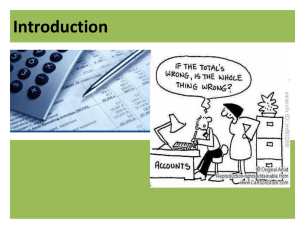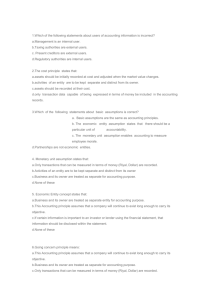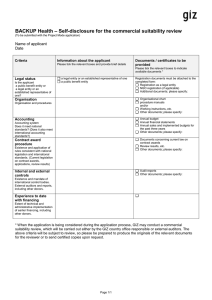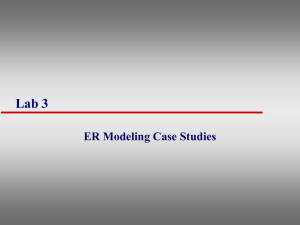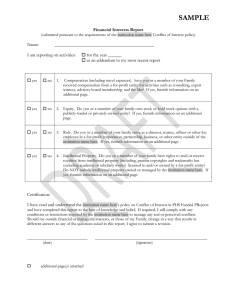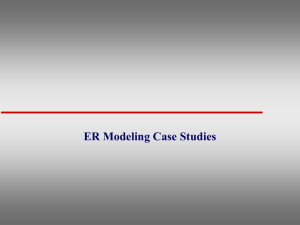Events that may indicate going concern
advertisement
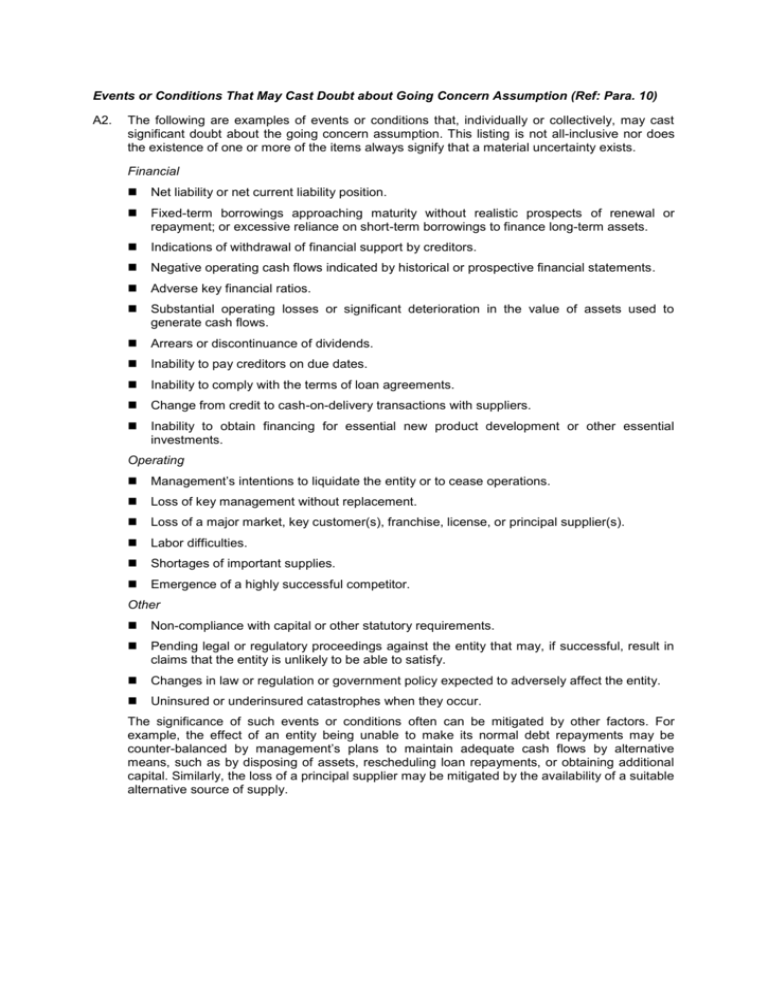
Events or Conditions That May Cast Doubt about Going Concern Assumption (Ref: Para. 10) A2. The following are examples of events or conditions that, individually or collectively, may cast significant doubt about the going concern assumption. This listing is not all-inclusive nor does the existence of one or more of the items always signify that a material uncertainty exists. Financial Net liability or net current liability position. Fixed-term borrowings approaching maturity without realistic prospects of renewal or repayment; or excessive reliance on short-term borrowings to finance long-term assets. Indications of withdrawal of financial support by creditors. Negative operating cash flows indicated by historical or prospective financial statements. Adverse key financial ratios. Substantial operating losses or significant deterioration in the value of assets used to generate cash flows. Arrears or discontinuance of dividends. Inability to pay creditors on due dates. Inability to comply with the terms of loan agreements. Change from credit to cash-on-delivery transactions with suppliers. Inability to obtain financing for essential new product development or other essential investments. Operating Management’s intentions to liquidate the entity or to cease operations. Loss of key management without replacement. Loss of a major market, key customer(s), franchise, license, or principal supplier(s). Labor difficulties. Shortages of important supplies. Emergence of a highly successful competitor. Other Non-compliance with capital or other statutory requirements. Pending legal or regulatory proceedings against the entity that may, if successful, result in claims that the entity is unlikely to be able to satisfy. Changes in law or regulation or government policy expected to adversely affect the entity. Uninsured or underinsured catastrophes when they occur. The significance of such events or conditions often can be mitigated by other factors. For example, the effect of an entity being unable to make its normal debt repayments may be counter-balanced by management’s plans to maintain adequate cash flows by alternative means, such as by disposing of assets, rescheduling loan repayments, or obtaining additional capital. Similarly, the loss of a principal supplier may be mitigated by the availability of a suitable alternative source of supply.



